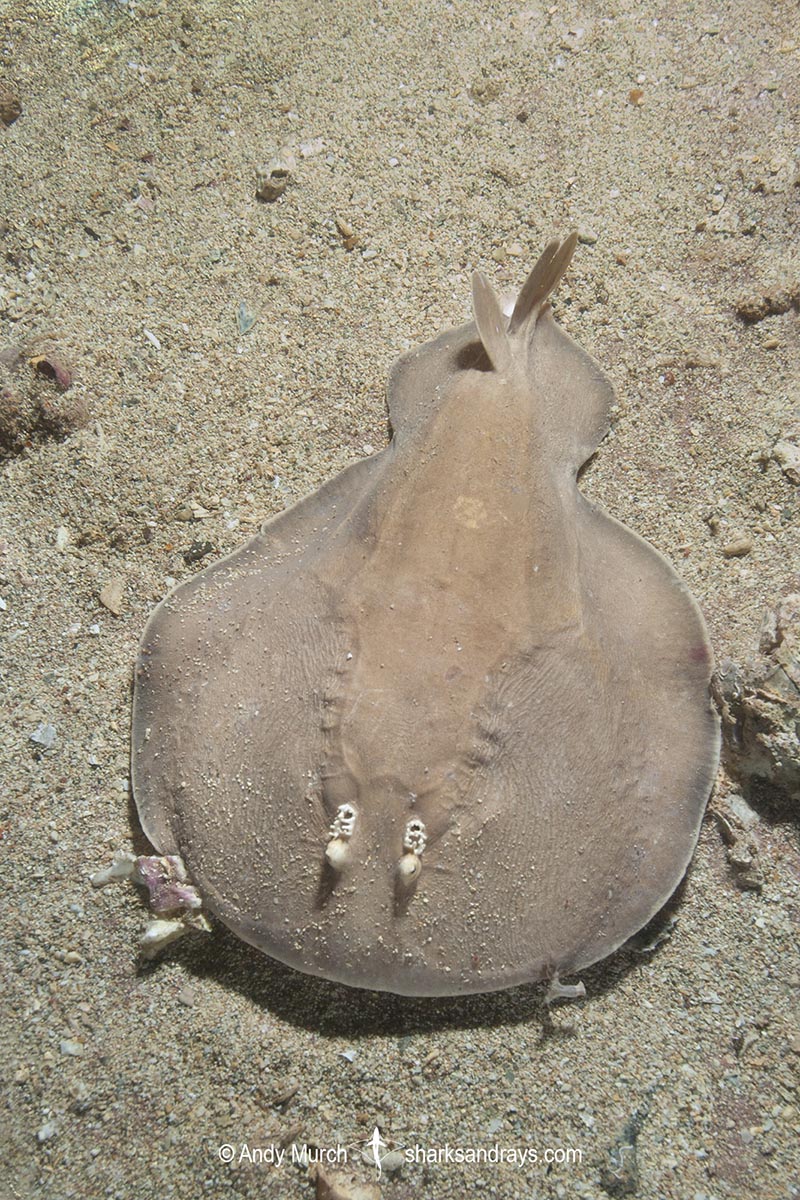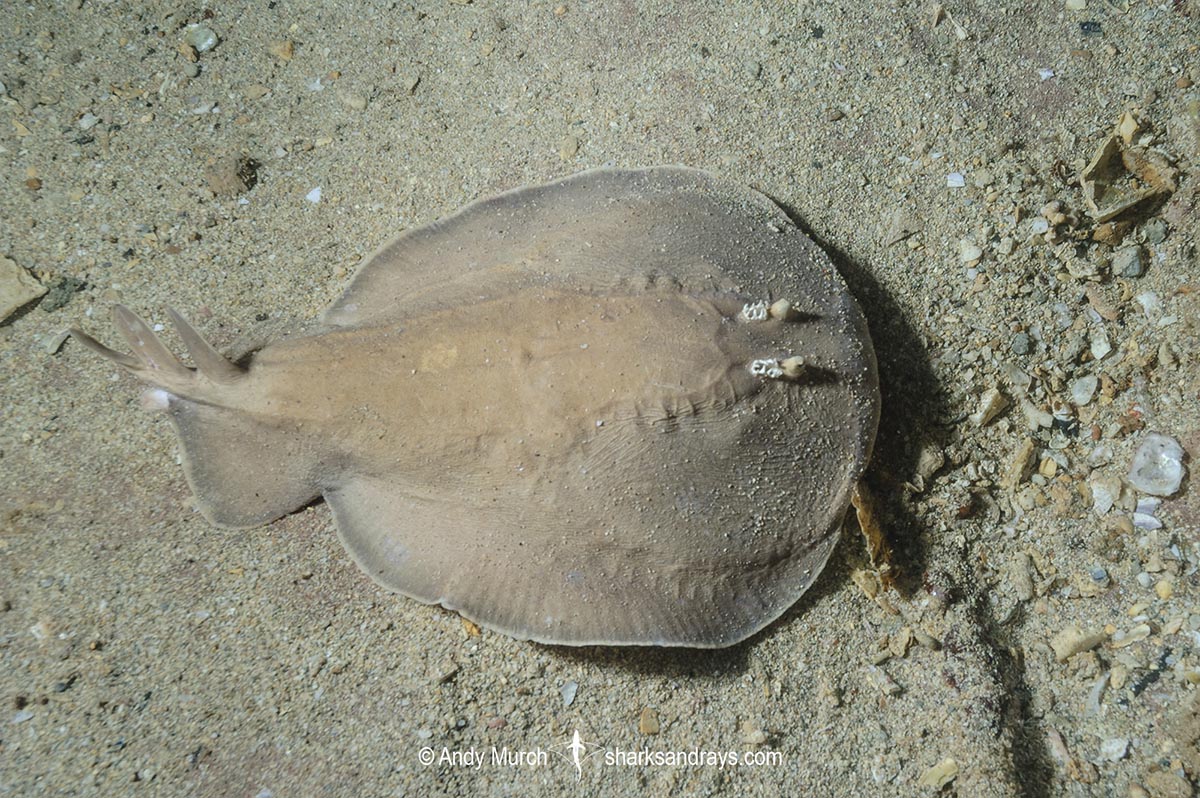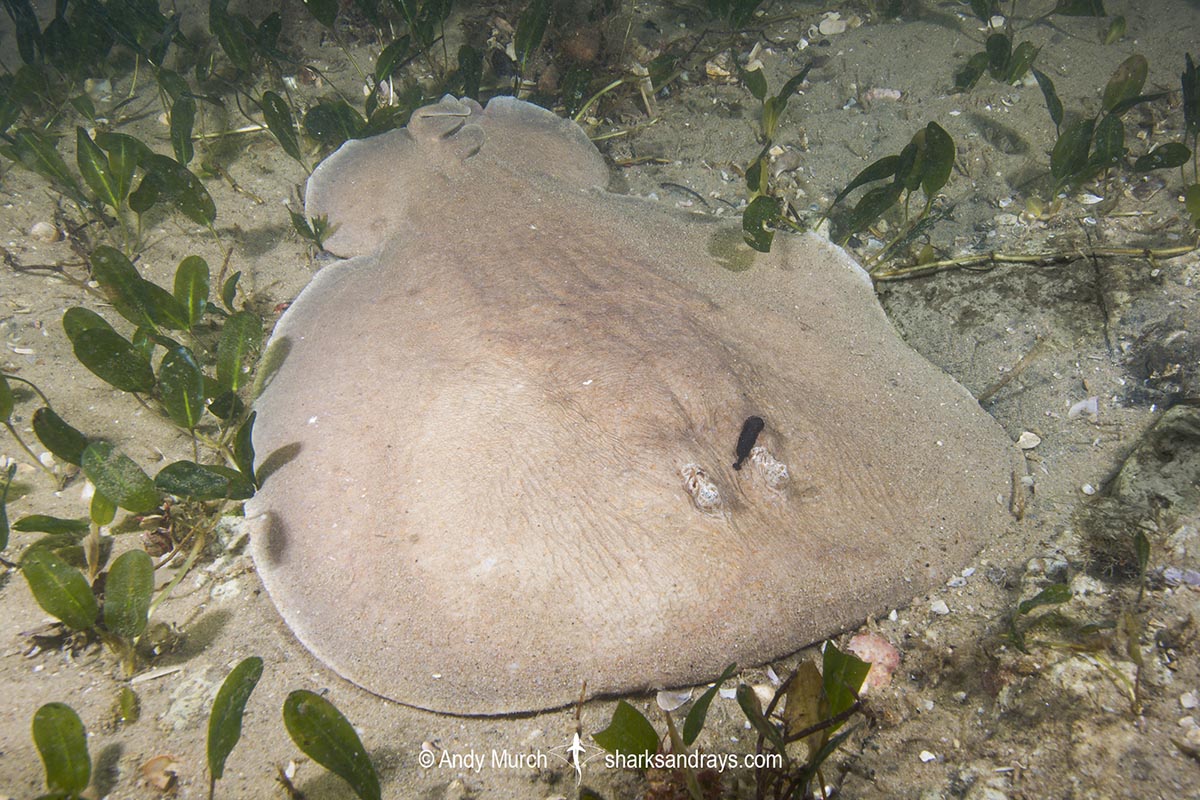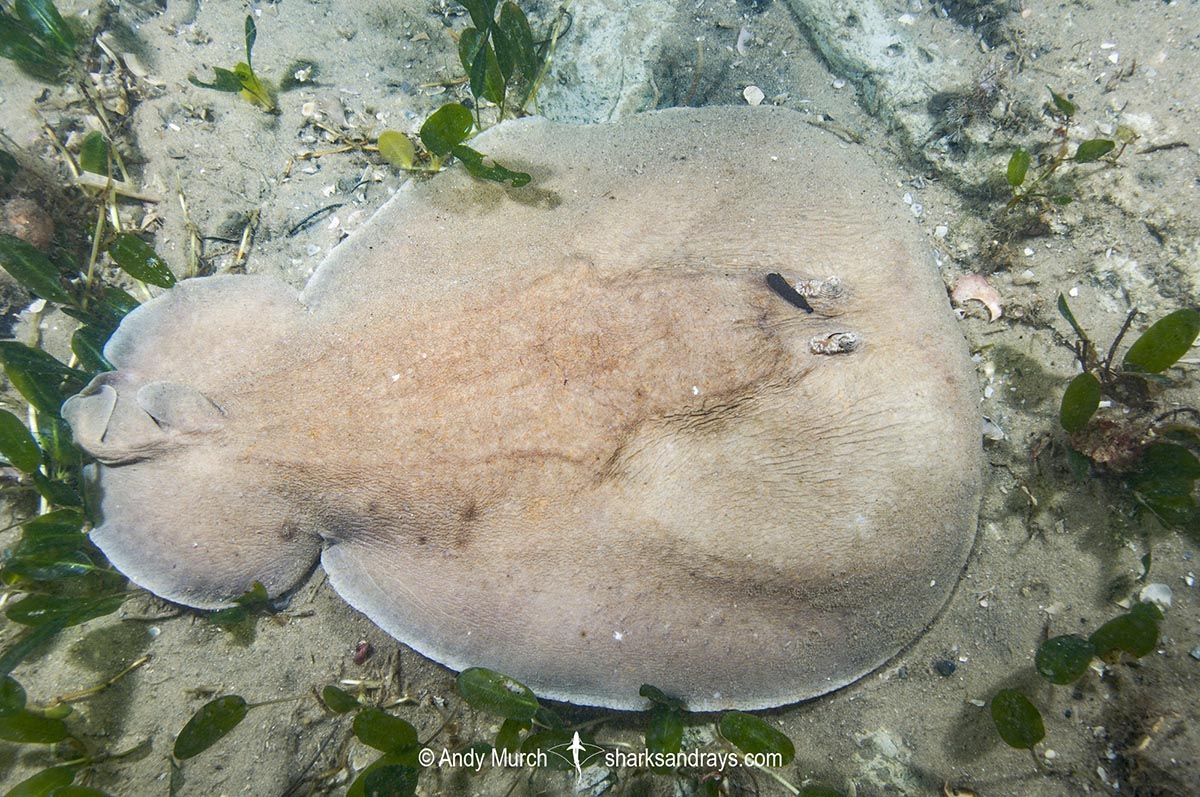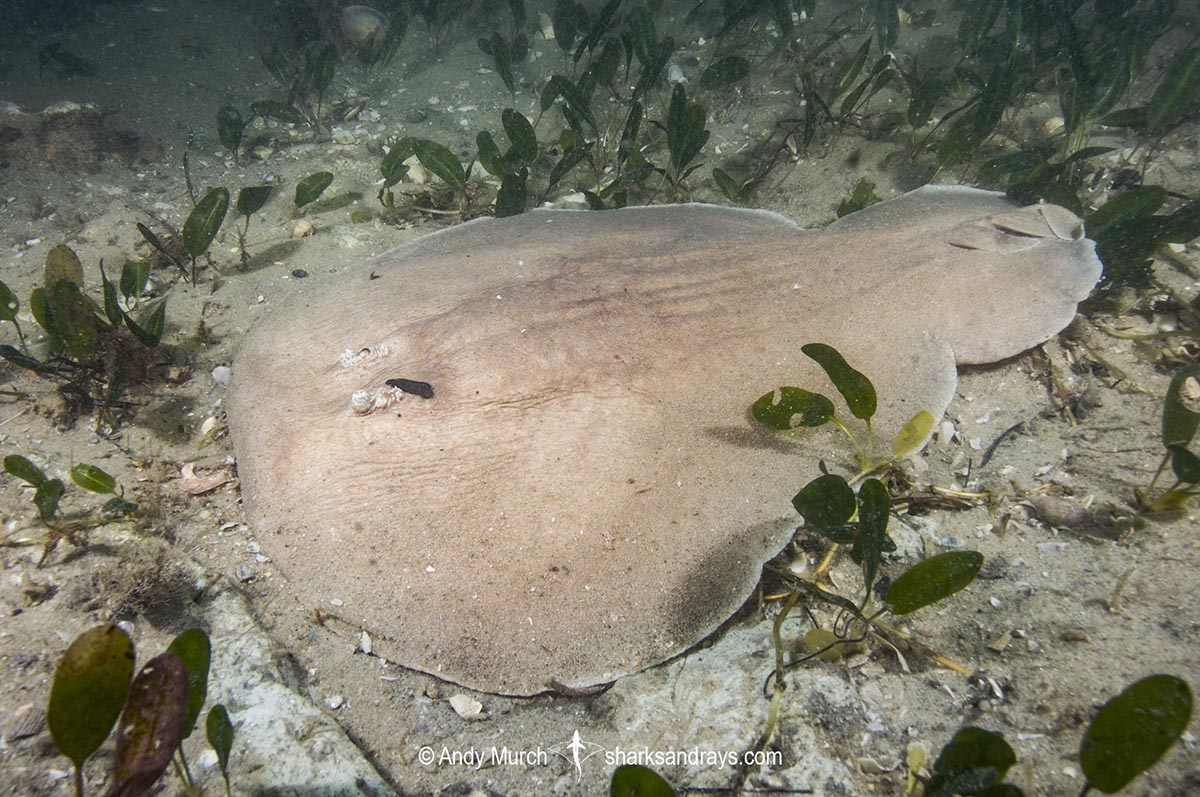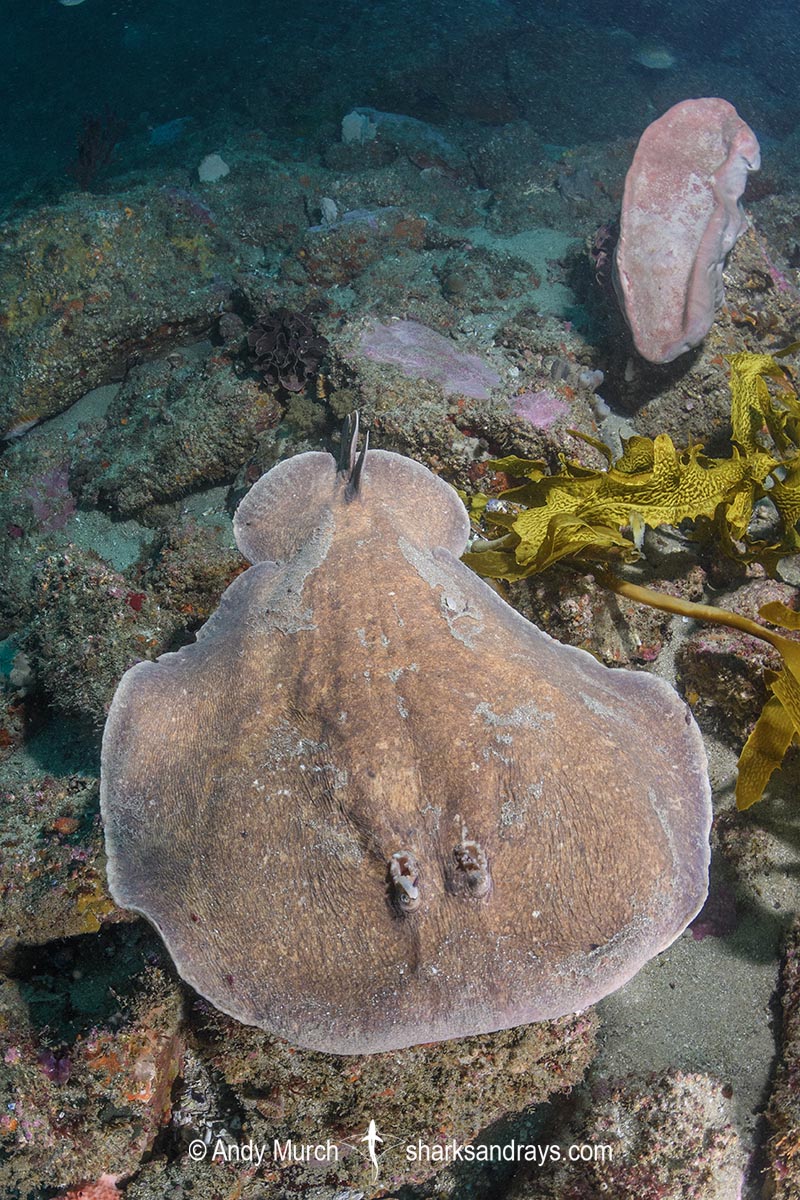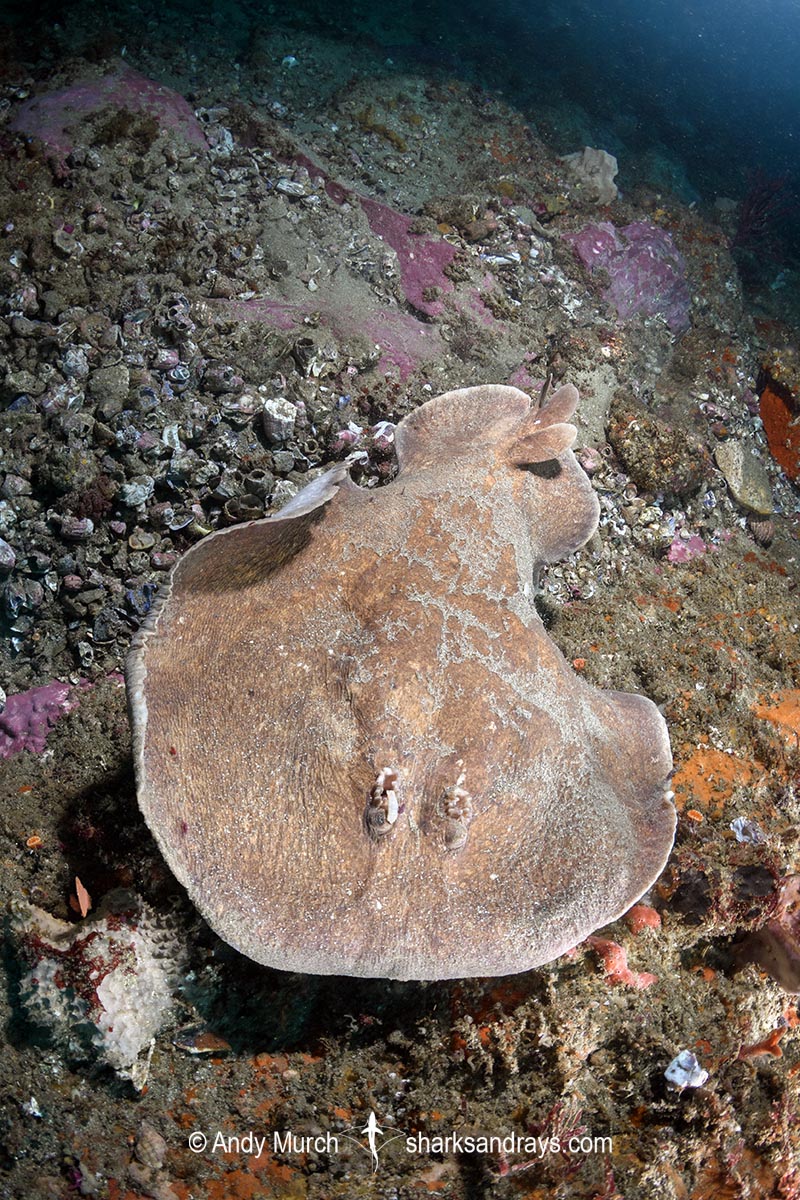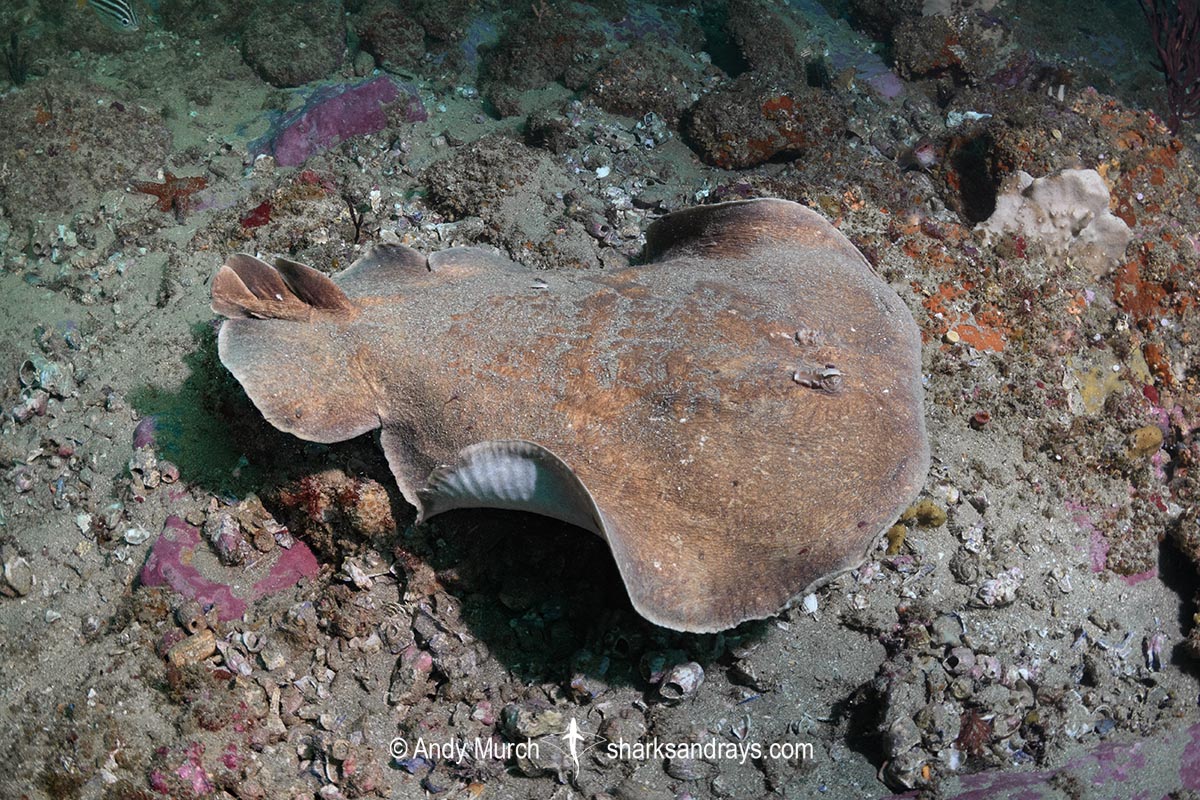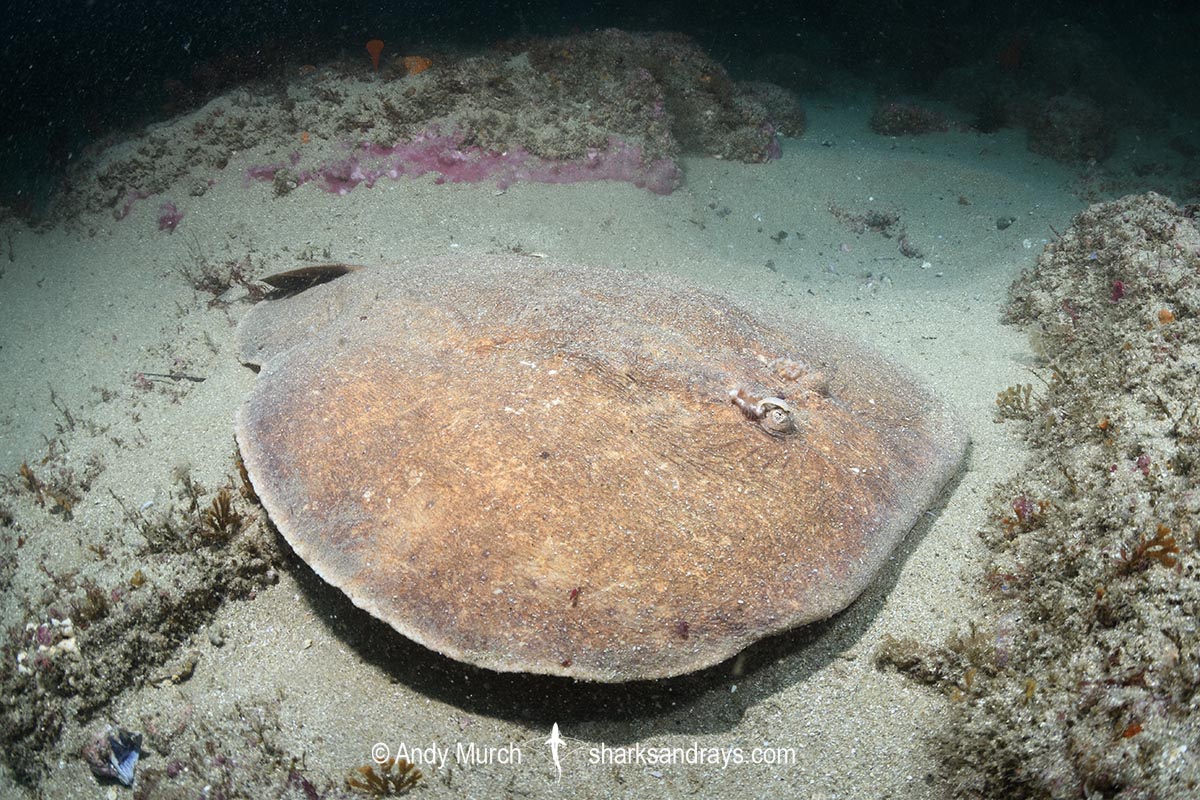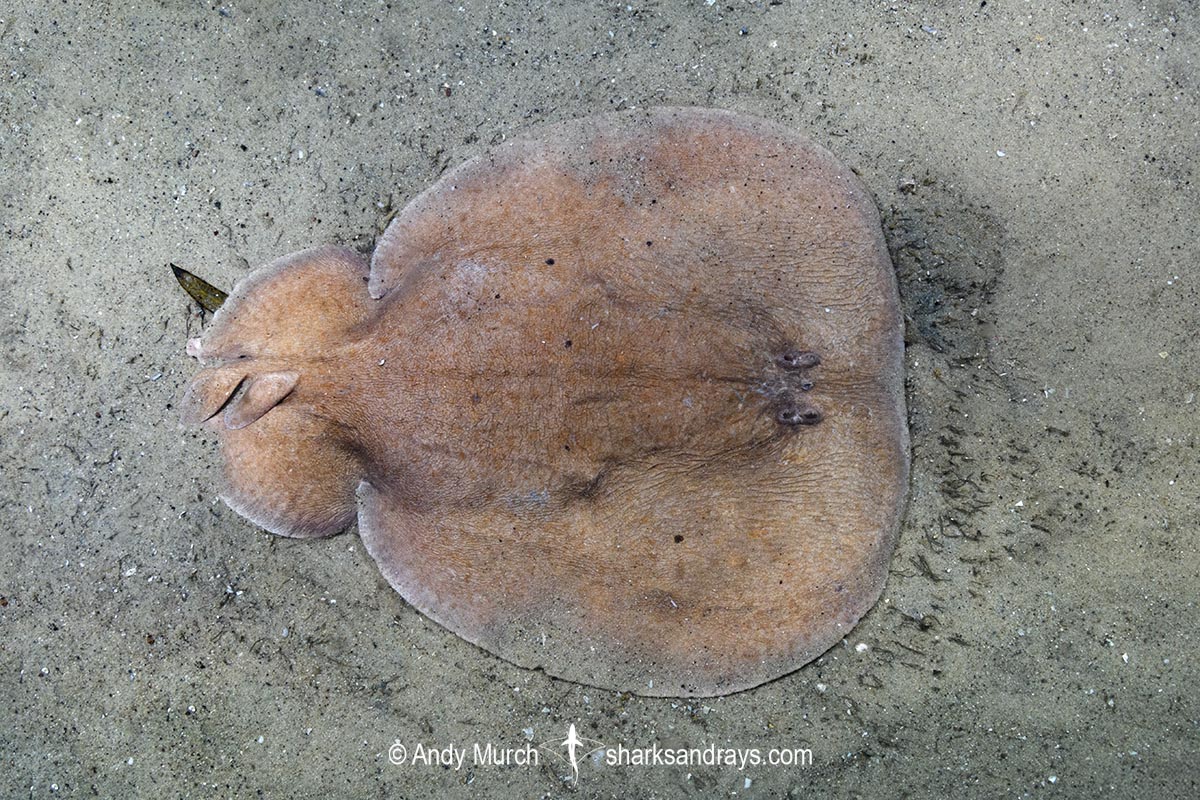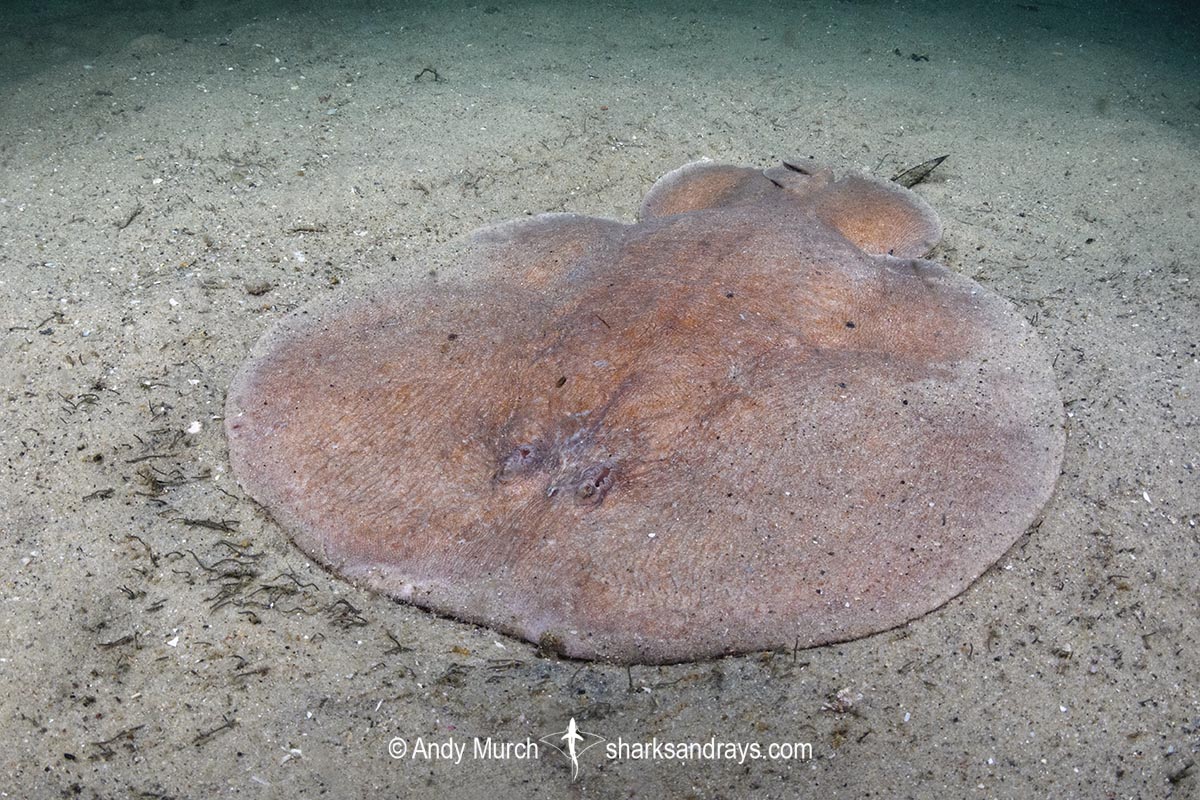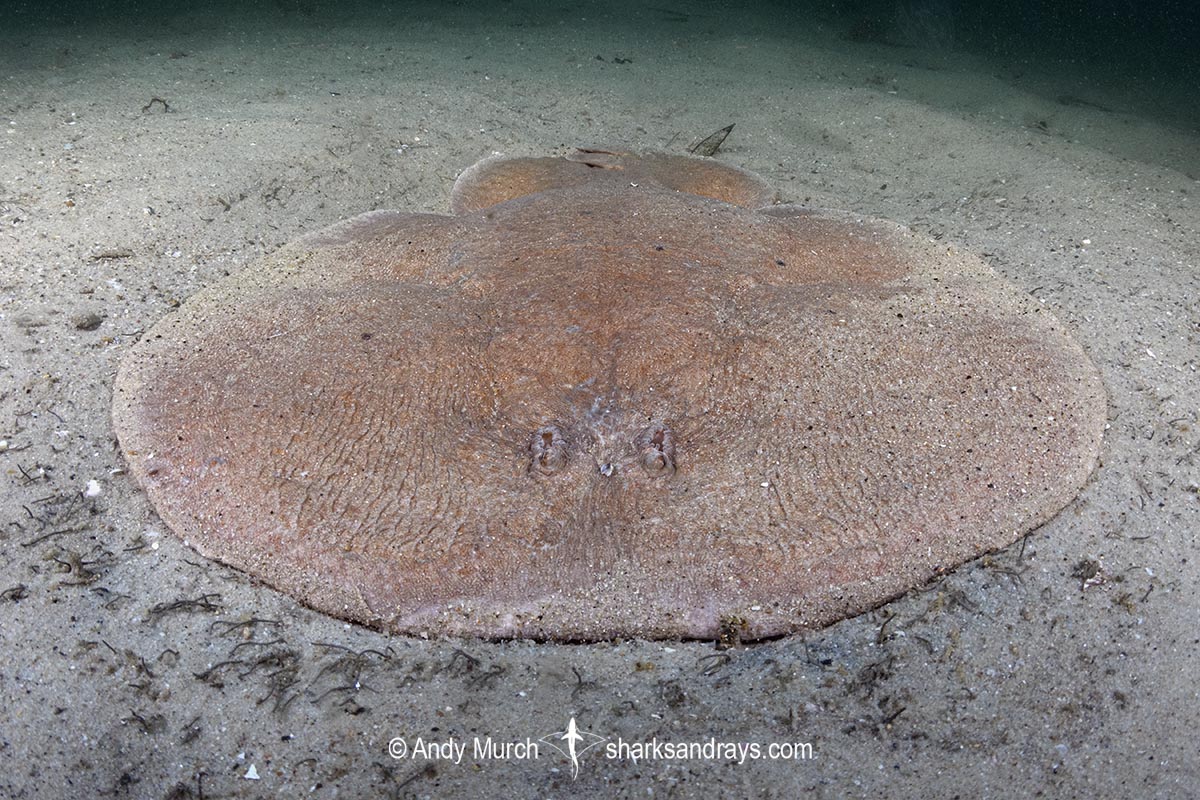Common names
Coffin Ray.
Binomial
Hypnos monopterygius
Synonyms
Hypnarce monopterygia, Hypnos monopterygium, Hypnos subnigrum, Lophius monopterygius.
Identification
A medium-sized electric ray with a thick, pear shaped body composed of a sub-circular pectoral disc and a much smaller sub-circular pelvic disc. Snout anterior margin straight, weakly convex, or centrally concave. Pectoral and pelvic fin apices broadly rounded.
Small, narrowly separated eyes and spiracles, positioned close to median. Spiracles oval, with numerous thin papillae. Nostrils small and circular. Mouth large and arched, without labial furrows.
Tail broad based but exytremely small and short. Two overlapping dorsal fins anterior to pelvic fin posterior margin. Caudal fin small with a rounded margin, size sub-equal to dorsal fins. Upper caudal margin straight. Ventral margin broadly convex.
Colour
Dorsum greyish brown to dark reddish brown. Occasionally with irregular dark blotches. Ventrum white or yellowish.
Size
Maximum length 63cm. Size at birth 8-11cm.
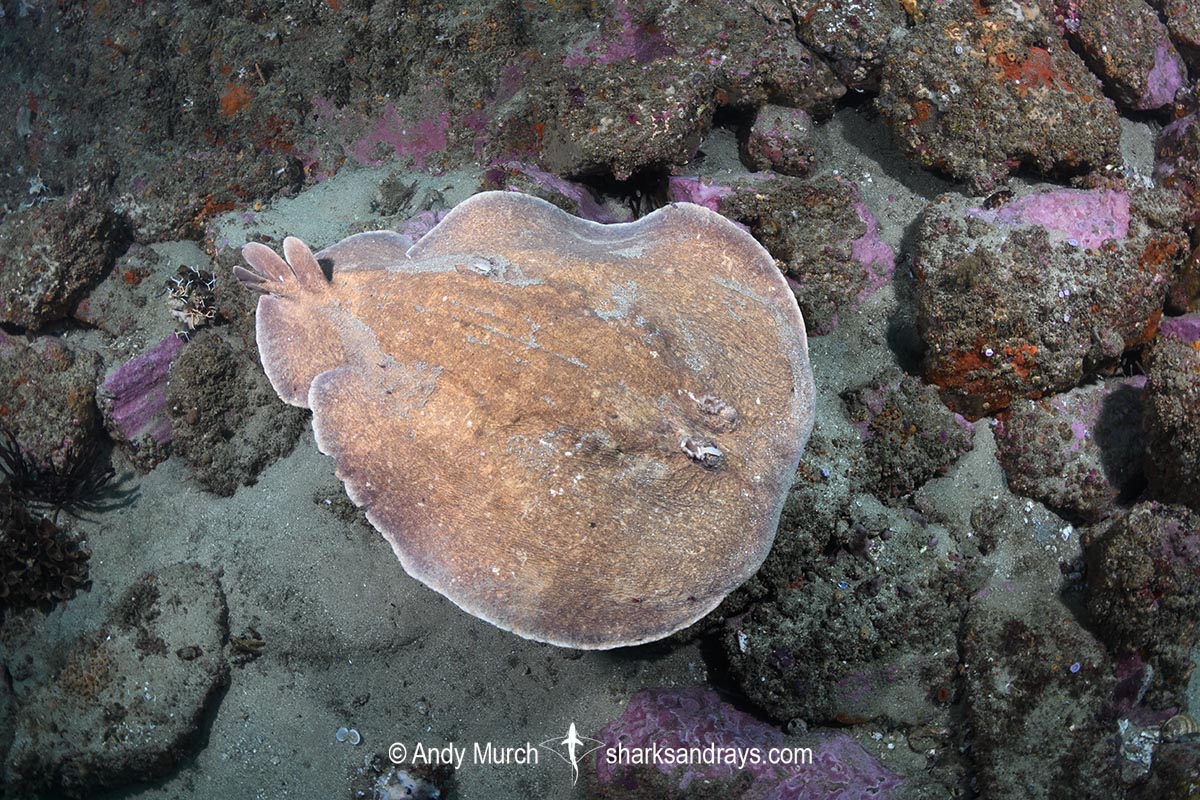
Conservation Status
LEAST CONCERN
The Coffin Ray (Hypnos monopterygius) has very few threats. It is only occasionally taken as bycatch by commercial trawlers and is usually released alive. Even when left on deck for a few hours, post-release survivorship is high in this hardy species.
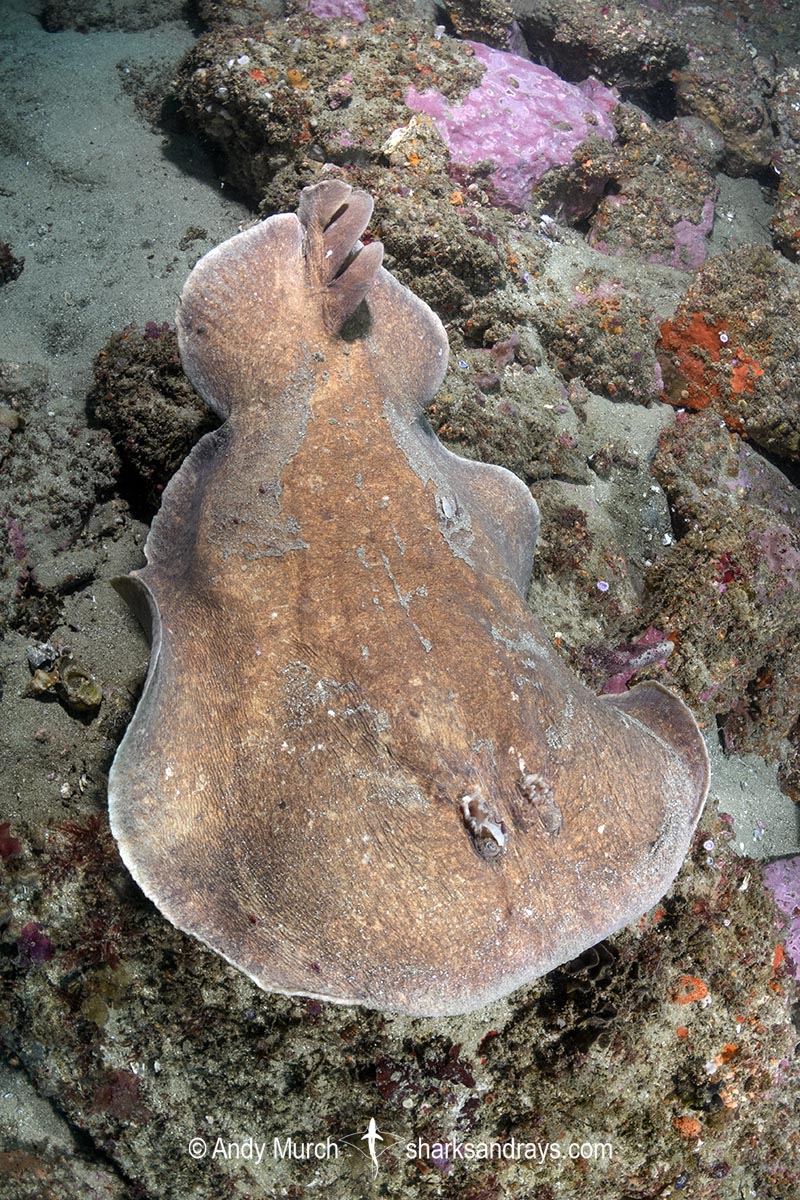
Habitat
Temperate to tropical seas. Benthic on sand, mud, sea grass beds, and sometimes estuaries but not into fresh water. Occasionally to 220m on the continental shelf but usually from close inshore to ~80m.
Distribution
The coffin ray is an Australian endemic, occurring from St Vincents Gulf in South Australia to Timor Reef in the Northern Territory. And from Eden in New South Wales to Heron Island on Great Barrier Reef.
Reproduction
Aplacental viviparous. Litter size 4-8.
Diet
Capable of stretching its mouth open to ingest fishes almost as large as itself.
Behavior
The coffin ray can deliver an extremely powerful electric shock to stun or kill large fishes.
Often buries under the sand during the day.
Reaction to divers
Easy to approach. Generally remains motionless or continues moving slowly.
CAUTION: Divers should be careful not to provoke this electric ray due to the severity of the shock it can deliver.
Diving logistics
The coffin ray is seen at a great many dive sites around the coast of Australia.
I have seen the western population at Exmouth Navy Pier in WA, and the eastern population at Nelson Bay in NSW.
What’s new
View our full list of updates
Similar species
The coffin ray is easily distinguished by it’s flabby body and truncated tail with tall, closely separated caudal and dorsal fins.

